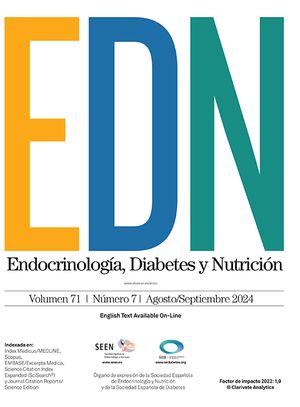El síndrome de secreción inadecuada de hormona antidiurética (SIADH)/síndrome de antidiuresis inadecuada se caracteriza por una hiponatremia hipotónica con una insuficiente dilución urinaria para la hipoosmolalidad plasmática existente, en ausencia de un descenso del volumen circulante eficaz (con o sin tercer espacio), hipotensión, insuficiencia renal, insuficiencia adrenal, hipotiroidismo, vómitos prolongados, u otros estímulos fisiológicos no osmóticos de la ADH. Hay 4 tipos, en función de la respuesta de la ADH a la perfusión de salino hipertónico, de las cuales el tipo D no presenta alteración de la secreción de ADH, sino que se caracteriza por una apertura renal mantenida de los canales de aquaporina 2, en algunos casos por una mutación activadora del gen del receptor V2, y se denomina síndrome nefrogénico de antidiuresis inadecuada. La causa más frecuente de la SIADH es la provocada por fármacos y la edad avanzada es un factor de riesgo para el desarrollo del cuadro. Se infradiagnostica y el ingreso hospitalario con frecuencia agrava el cuadro por aporte iatrogénico de un exceso de líquido, con frecuencia hipotónico, junto a una disminución en el aporte de sal. Los objetivos de su tratamiento son la normalización de la natremia, cuando es posible, además de evitar tanto la encefalopatía hiponatrémica como el síndrome de desmielinización osmótica. Deberán ser tratados con la misma agresividad cuadros de secreción “adecuada” de la ADH con hiponatremia normovolémica y elevada morbimortalidad, como la hiponatremia posquirúrgica.
The syndrome of inappropriate secretion of antidiuretic hormone (SIADH)/syndrome of inappropriate antidiuresis is characterized by a hypotonic hyponatremia, with an insufficiently diluted urine given the plasmatic hypoosmolality, in the absence of hypovolemia (with or without a third space), hypotension, renal or heart failure, cirrhosis of the liver, hypothyroidism, adrenal insufficiency, vomiting, or other non-osmotic stimuli of ADH secretion. The response of ADH to the infusion of hypertonic saline divides SIADH into 4 different types. In type D, there is no alteration in ADH secretion. Rather, the defect is the maintained permeability of kidney aquaporin-2 channels to water. Activating mutations of the V2 receptor have been identified. The most frequent cause of SIADH is the use of drugs that induce secretion of the hormone. Old age is per se a risk factor for its development. SIADH is underdiagnosed, and hospitalization often worsens the clinical situation, due to a yatrogenic excess in the use of oral and iv liquids, often hypotonic, together with a reduction in salt intake. Treatment is directed towards normalization of natremia when possible, together with the avoidance of both hyponatremic encephalopathy as well as the osmotic demyelinization syndrome. Cases of “appropriate” secretion of ADH with normovolemic hyponatremia and high mortality rates should be treated with the same urgency as SIADH - such is the case of post-surgical hyponatremia.




